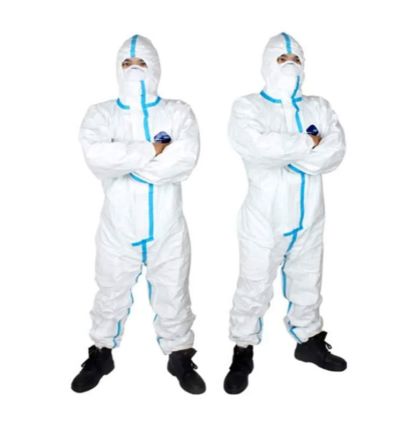Everything You Need to Know About Virus Protection Clothing

As the world halts in a standstill and social distancing has become the new normal, there is little that has to do with the outside world. We have all become comfortable working from the confines of our homes and life has become bleaker than ever. Even so, every now and then, we might have to pop out for a quick grocery run. If you’re wondering what kind of virus-protection clothing you should wear, so as to prevent the potential spread of the virus, you’ve come to the right place.
Virus Protection Clothing?
For starters, let’s consider if virus protection clothing is even a thing. There are no stupid questions when it comes to COVID-19, but at the rate, it’s been spreading, some may consider thinking smart and fast. One question that has definitely crossed everyone’s mind is, what should I wear outside? Surely, there’s got to be a kind of fabric that is best suited for this pandemic? Perhaps a fabric that has been deemed as virus protection clothing?
Before we get to that, let’s consider this question: “Can the virus be transmitted through your clothes?”
With the “novel coronavirus” being relatively new in the medical field, no one has the right answer to this. However, most medical professionals are answering that this is probably not possible. There is no evidence to back the fact that the virus can be spread directly through your clothes. This of course, is the short answer. The long answer is that there is no concrete evidence to prove how long the virus can survive on your pants, shirts, sneakers, or trousers.
While there is no virus protection clothing of yet, some educated guesses have been made on how long the virus can survive on certain surfaces. For instance, it can survive on paper and cardboard for about 24 hours. On non-porous surfaces like steel and plastic, it can last up to 3 days. Clothes, on the other hand, are porous, and therefore, the chances of them surviving on your clothes are infinitesimal. Keep in mind, educated or not, this is still a guess. So There’s No Need for Virus Protection Clothing?
Wait a minute! Does this mean that the virus definitely cannot be spread through your clothes? NO. Consider the following scenario. Your clothes are contaminated by the virus and you happen to touch the contaminated area with your hands. You then go on to touch your eyes, nose, or mouth. This could very well lead to a case where you’re infected by the virus; the route cause is your clothes. Keep in mind, however, that this particular scenario is highly unlikely unless you are exposed to high-risk settings like a hospital.
Also, there is no data to conclude that the virus will thrive on certain fabrics, be it your nylon t-shirt, your denim jacket, or your cotton hoodie. However, one can speculate that the virus could be seen more easily on something more absorbent. Therefore, fabrics like cotton and viscose rayon could possibly be surfaces the virus would be found on. Even so, this is not a very effective way for the virus to spread, so there’s no reason to panic if you’re reading this outside while wearing either.
Washing Clothes After Getting Back
Now that we’ve established there’s no virus protection clothing invented as yet, a common question asked by many is whether you must wash your clothes you wore outside as you step back inside. Experts on the matter have answered that this might be unnecessary. However, if you were rubbing or touching different surfaces directly involving your clothes, you should definitely change. This is exceptional to doctors and healthcare workers, of course.
Should I Touch Surfaces with My Sleeves Rather Than My Hands?
Ever since the outbreak, many germophobes have been seen using their sleeves to open doors or touch certain surfaces. But stop to think whether this is a smart decision. The seemingly logical explanation reasons that the virus is most easily transmitted through your hands, and therefore, prevent my hands from touching the virus anyway possible. However, medical professionals have confirmed this is not the smart thing to do. It’s best to use your hands and wash them thoroughly afterward. You can wash your hands umpteen times a day, but you cannot do the same with your clothes.
We hope these tips regarding your clothing during these troubling tips will help you. Stay safe and indoors!
